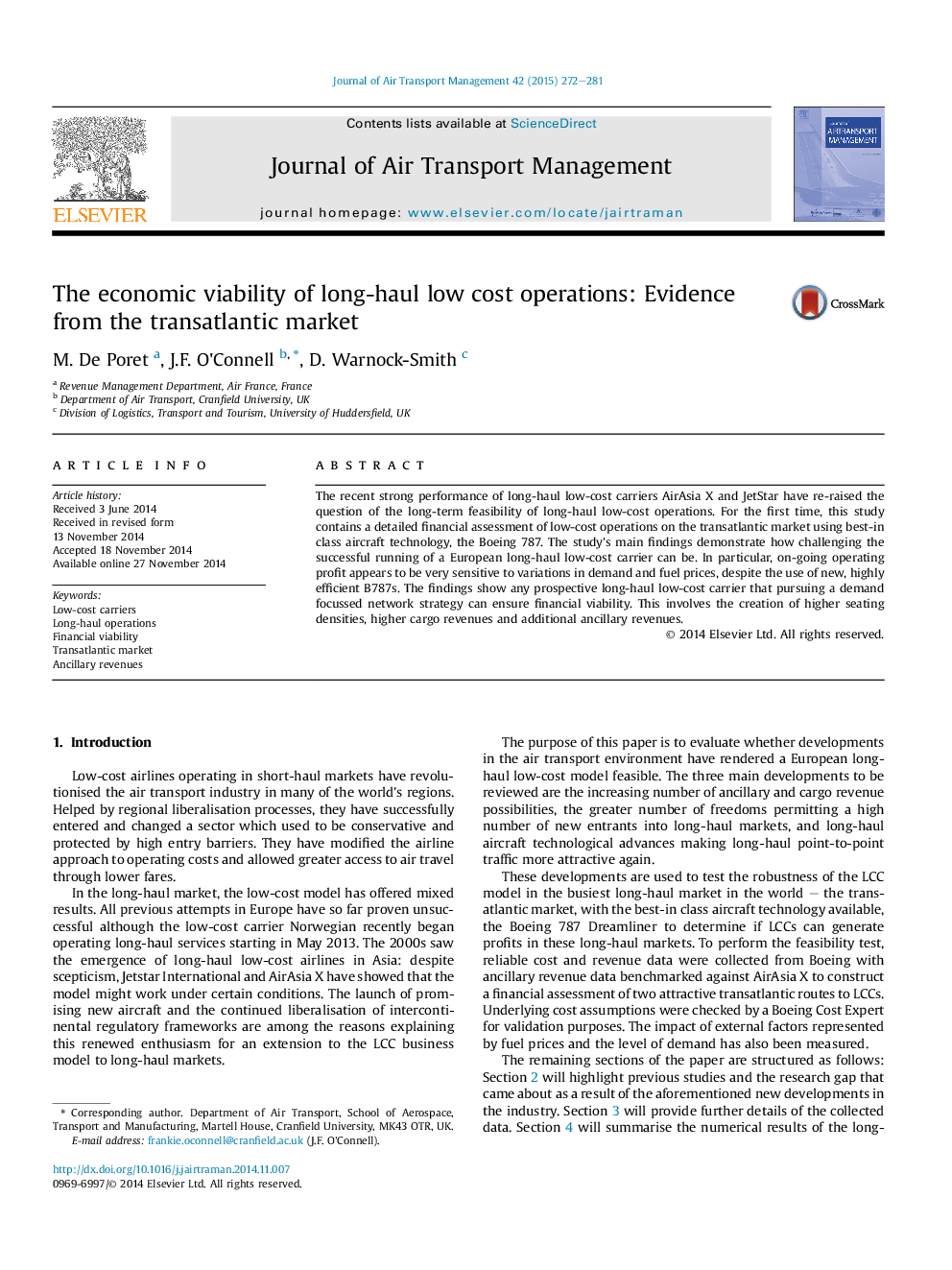| Article ID | Journal | Published Year | Pages | File Type |
|---|---|---|---|---|
| 1030831 | Journal of Air Transport Management | 2015 | 10 Pages |
•The financial viability of the long-haul low-cost model is tested using a bottom-up approach.•Low-cost viability is sensitive to demand and fuel price variation even with B787 aircraft.•A focus on higher seating densities and cargo/ancillary revenues can mitigate sensitivities.
The recent strong performance of long-haul low-cost carriers AirAsia X and JetStar have re-raised the question of the long-term feasibility of long-haul low-cost operations. For the first time, this study contains a detailed financial assessment of low-cost operations on the transatlantic market using best-in class aircraft technology, the Boeing 787. The study's main findings demonstrate how challenging the successful running of a European long-haul low-cost carrier can be. In particular, on-going operating profit appears to be very sensitive to variations in demand and fuel prices, despite the use of new, highly efficient B787s. The findings show any prospective long-haul low-cost carrier that pursuing a demand focussed network strategy can ensure financial viability. This involves the creation of higher seating densities, higher cargo revenues and additional ancillary revenues.
